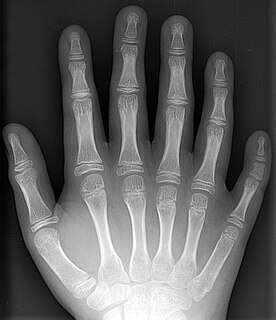 W
WSupernumerary body parts are most commonly a congenital disorder involving the growth of an additional part of the body and a deviation from the body plan. Body parts may be easily visible or hidden away, such as internal organs.
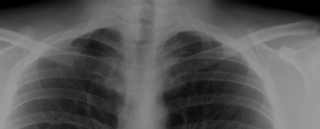 W
WA cervical rib in humans is an extra rib which arises from the seventh cervical vertebra. Their presence is a congenital abnormality located above the normal first rib. A cervical rib is estimated to occur in 0.2% to 0.5% of the population. People may have a cervical rib on the right, left or both sides.
 W
WDiphallia, penile duplication (PD), diphallic terata, or diphallasparatus, is an extremely rare developmental abnormality in which a person is born with two penises. The first reported case was by Johannes Jacob Wecker in 1609. Its occurrence is 1 in 5.5 million boys in the United States.
 W
WDysmelia is a congenital disorder of a limb resulting from a disturbance in embryonic development.
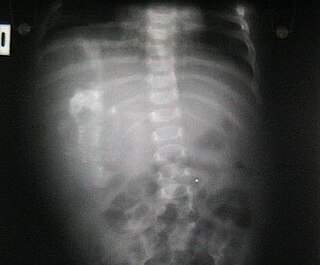 W
WFoetus in foetu is a developmental abnormality in which a mass of tissue resembling a foetus forms inside the body. An early example of the phenomenon was described in 1808 by George William Young.
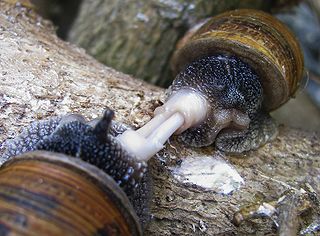 W
WIn reproductive biology, a hermaphrodite is an organism that has complete or partial reproductive organs and produces gametes normally associated with both male and female sexes. Many taxonomic groups of animals do not have separate sexes. In these groups, hermaphroditism is a normal condition, enabling a form of sexual reproduction in which either partner can act as the "female" or "male". For example, the great majority of tunicates, pulmonate snails, opisthobranch snails, earthworms, and slugs are hermaphrodites. Hermaphroditism is also found in some fish species and to a lesser degree in other vertebrates. Most plants are also hermaphrodites.
 W
WHyperdontia is the condition of having supernumerary teeth, or teeth that appear in addition to the regular number of teeth. They can appear in any area of the dental arch and can affect any dental organ. The opposite of hyperdontia is hypodontia, where there is a congenital lack of teeth, which is a condition seen more commonly than hyperdontia. The scientific definition of hyperdontia is "any tooth or odontogenic structure that is formed from tooth germ in excess of usual number for any given region of the dental arch." The additional teeth, which may be few or many, can occur on any place in the dental arch. Their arrangement may be symmetrical or non-symmetrical.
 W
WA pelvic digit, pelvic finger, or pelvic rib is a rare congenital abnormality in humans, in which bone tissue develops in the soft tissue near the pelvis, resembling a rib or finger and often divided into one or more segments with pseudo-articulations. Pelvic digits are typically benign and asymptomatic, and are usually discovered accidentally. Approximately 41 cases have been reported.
 W
WPolycephaly is the condition of having more than one head. The term is derived from the Greek stems poly meaning "many" and kephalē meaning "head". A polycephalic organism may be thought of as one being with a supernumerary body part, or as two or more beings with a shared body.
 W
WPolydactyly or polydactylism, also known as hyperdactyly, is an anomaly in humans and animals resulting in supernumerary fingers and/or toes. Polydactyly is the opposite of oligodactyly.
 W
WPolymelia is a birth defect in which an affected individual has more than the usual number of limbs. It is a type of dysmelia. In humans and most land-dwelling animals, this means having five or more limbs. The extra limb is most commonly shrunken and/or deformed. The term is from Greek πολυ- "many", μέλεα "limbs".
 W
WPolyorchidism is the incidence of more than two testicles. It is a very rare congenital disorder, with fewer than 200 cases reported in medical literature and six cases in veterinary literature.
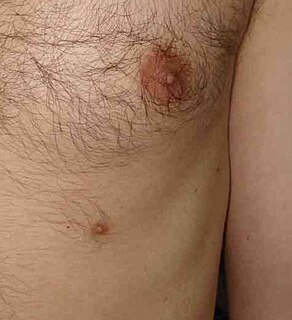 W
WA supernumerary nipple is an additional nipple occurring in mammals, including humans. They are often mistaken for moles. Studies variously report the prevalence of supernumerary nipples as approximately 1 in 18 and 1 in 40.
 W
WUterus didelphys represents a uterine malformation where the uterus is present as a paired organ when the embryogenetic fusion of the Müllerian ducts fails to occur. As a result, there is a double uterus with two separate cervices, and possibly a double vagina as well. Each uterus has a single horn linked to the ipsilateral fallopian tube that faces its ovary.
 W
WA wisdom tooth or third molar is one of the three molars per quadrant of the human dentition. It is the most posterior of the three. The age at which wisdom teeth come through (erupt) is variable, but generally occurs between late teens and early twenties. Most adults have four wisdom teeth, one in each of the four quadrants, but it is possible to have none, fewer, or more, in which case the extras are called supernumerary teeth. Wisdom teeth may get stuck (impacted) against other teeth if there is not enough space for them to come through normally. While the impaction does not cause movement of other teeth, it can cause tooth decay if oral hygiene becomes more difficult. Wisdom teeth which are partially erupted through the gum may also cause inflammation and infection in the surrounding gum tissues, termed pericoronitis. Wisdom teeth are often extracted when or even before these problems occur. However, some, including the National Institute for Health and Care Excellence in the UK, recommend against the prophylactic extraction of disease-free impacted wisdom teeth.